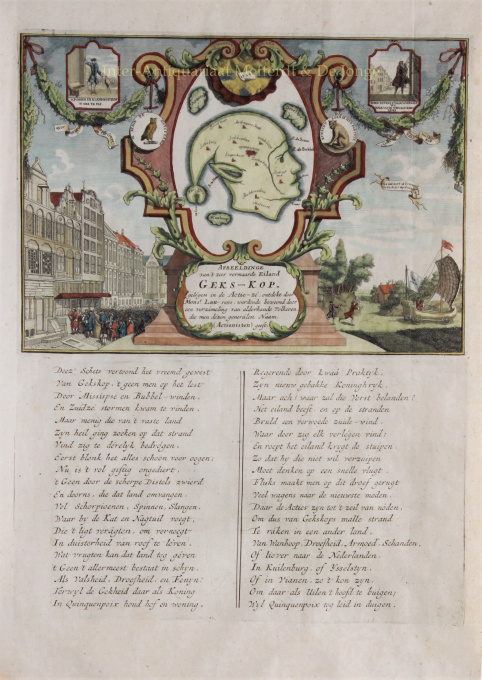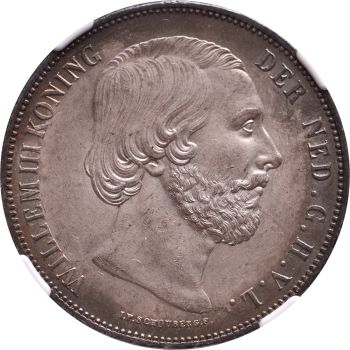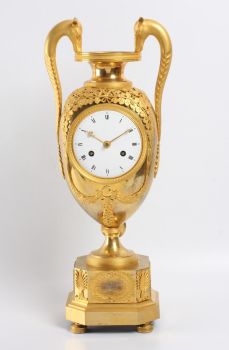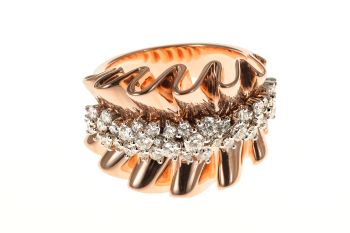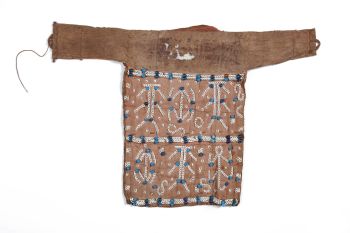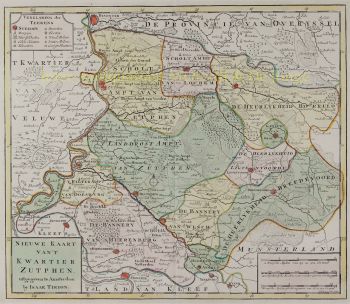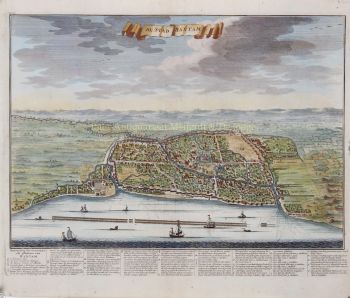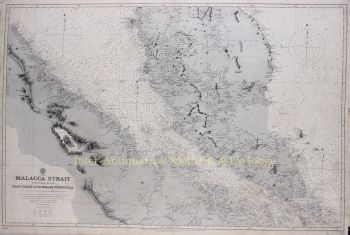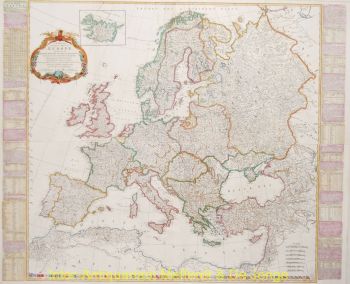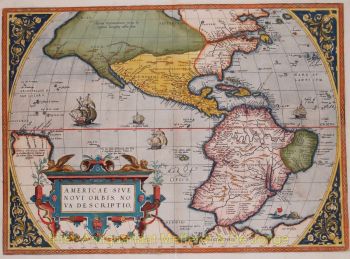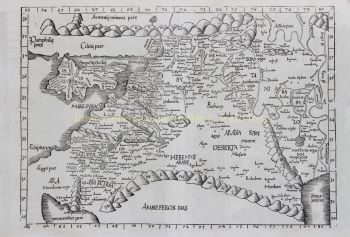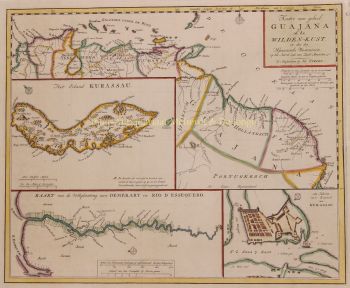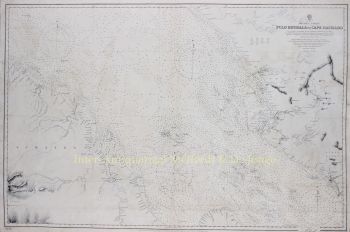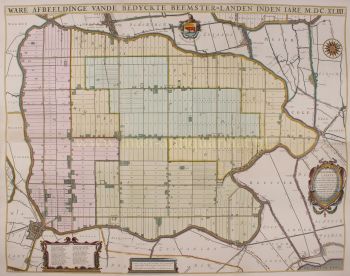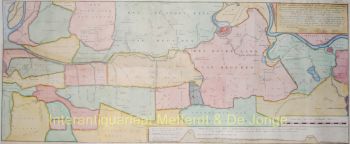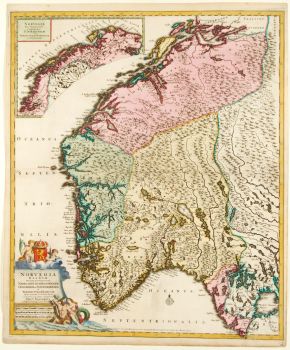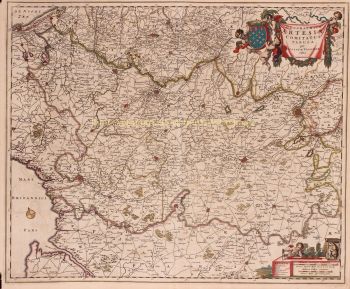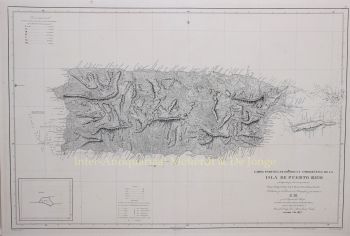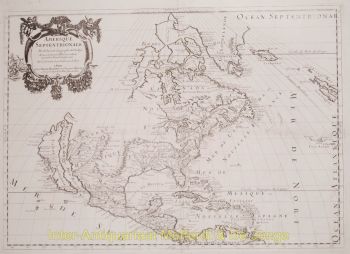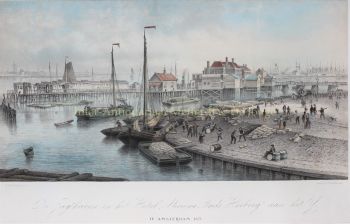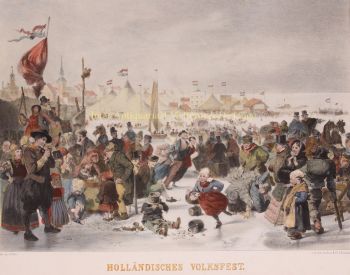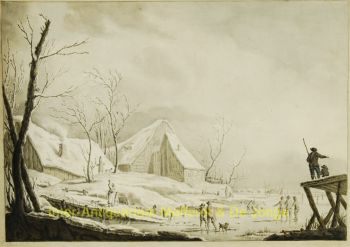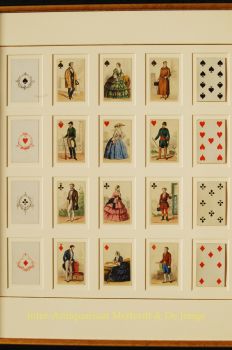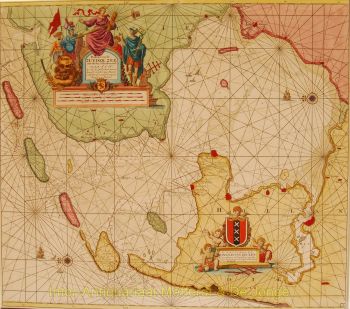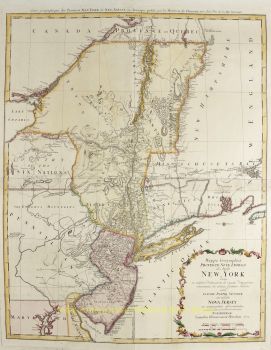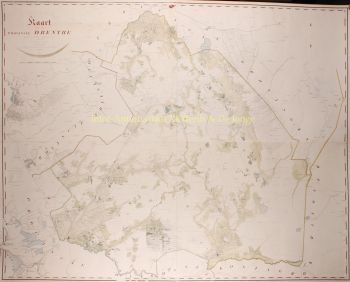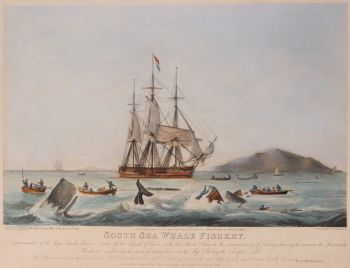Mississippi Bubble, die Mad-Head-Insel 1720
Unbekannter Künstler
€ 1.250
Inter-Antiquariaat Mefferdt & De Jonge
- Über Kunstwerk“Afbeeldinge van't zeer vermearde Eiland Geks-Kop…”, [Representation of the very famous island of Mad-head, lying in the sea of shares, discovered by Mr. Lawrens, and inhabited by a collection of all kinds of people, to whom are given the general name shareholders.] Copper engraving anonymously engraved and printed in or after 1720 in Amsterdam for Het Groote Tafereel der Dwaasheid… The print satirizes the folly and consequence of the bubble economy created by the Mississippi Scheme and its careless investors. Size 29 x 23 cm. This satirical engraving of the Mississippi Bubble is one of the most famous cartographic curiosities. It represents the collapse of the French Compagnie de la Louisiane d'Occident, founded by the Scottish financier John Law in 1717, which was granted control of Louisiana. Its plans to exploit the resources of the region (the “Mississippi Scheme”) captured the popular imagination and people rushed to invest: share prices opened at 500 livres, but rapidly rose to 18,000 livres. At this point speculators indulged in profit-taking, causing a run on the shares. Confidence collapsed, causing a run on the company’s capital and the company went bankrupt, ruining many, not only in France, but throughout Europe. As a consequence of this failure, confidence in many colonial schemes collapsed, forcing many companies into bankruptcy, including the English South Sea Company and a number in the Netherlands, prompting this satire. The center of the map is an island that takes the form of a traditional fool’s head. It is situated in the “Sea of Shares”, surrounded by the smaller islands of Armoed [Poverty], Droefhyt [Sorrow], and Wanhoop [Despair]. Rivers are used to define the face, the cap, and the donkey ears, and are marked with humorous place names including Bedriegers Stadt [Charlatan City], Leugenburg [Lie Town], Blind Voort [Blind Fort], Sottenburg [Crazy Town], and Bederfwyk [Corrupt Quarter], among others. At the center is the city of Quinqumpoix, named after the street in Paris where John Law maintained his offices. The rivers Seine, Teems [Thames], and Maas [Meuse], are major arteries in those countries most affected by the collapse: France, England, and The Netherlands, respectively. A vignette to the left of the map illustrates angry investors storming the Quincampoix coffee house where stock exchange traders met in Amsterdam. In another to the right, John Law himself flees from angry investors in the direction of Vianen on board a square-rigged land-yacht, itself another absurdity of the period. The map shares the sheet with a second plate, situated below it, that continues to satirize the Mississippi Scheme in verse. Price: EUR 1.250,-
- Über Künstler
Es kann vorkommen, dass ein Künstler oder Hersteller unbekannt ist.
Bei einigen Werken ist nicht zu bestimmen, von wem sie hergestellt wurden, oder sie wurden von (einer Gruppe von) Handwerkern hergestellt. Beispiele sind Statuen aus der Antike, Möbel, Spiegel oder Signaturen, die nicht klar oder lesbar sind, aber auch einige Werke sind überhaupt nicht signiert.
Außerdem finden Sie folgende Beschreibung:
•"Zugeschrieben …." Ihrer Meinung nach wohl zumindest teilweise ein Werk des Künstlers
•„Atelier von ….“ oder „Werkstatt von“ Ihrer Meinung nach eine Arbeit, die im Atelier oder in der Werkstatt des Künstlers, möglicherweise unter seiner Aufsicht, ausgeführt wurde
•„Kreis von ….“ Ihrer Meinung nach ein Werk aus der Zeit des Künstlers, das seinen Einfluss zeigt, eng mit dem Künstler verbunden, aber nicht unbedingt sein Schüler
•"Art von …." oder „Anhänger von ….“ Ihrer Meinung nach eine Arbeit, die im Stil des Künstlers ausgeführt wurde, aber nicht unbedingt von einem Schüler; kann zeitgenössisch oder fast zeitgenössisch sein
•„Art von ….“ Ihrer Meinung nach ein Werk im Stil des Künstlers, aber späteren Datums
•"Nach …." Ihrer Meinung nach eine Kopie (jegliches Datums) eines Werks des Künstlers
• „Unterzeichnet …“, „Datiert …“. oder „Beschriftet“ Ihrer Meinung nach wurde das Werk vom Künstler signiert/datiert/beschriftet. Das Hinzufügen eines Fragezeichens weist auf einen Zweifel hin
• „Mit Unterschrift …“, „Mit Datum …“, „Mit Aufschrift ….“ oder „Trägt Unterschrift/Datum/Beschriftung“ ihrer Meinung nach die Unterschrift/Datum/Beschriftung von jemand anderem als dem Künstler hinzugefügt wurde
Sind Sie daran interessiert, dieses Kunstwerk zu kaufen?
Artwork details
Related artworks
Unbekannter Künstler
Eine JURUNA TRIBE FEATHER HEADDRESS1900 - 1950
Preis auf AnfrageZebregs & Röell - Fine Art - Antiques
1 - 4 / 12- 1 - 4 / 24
- 1 - 4 / 12

